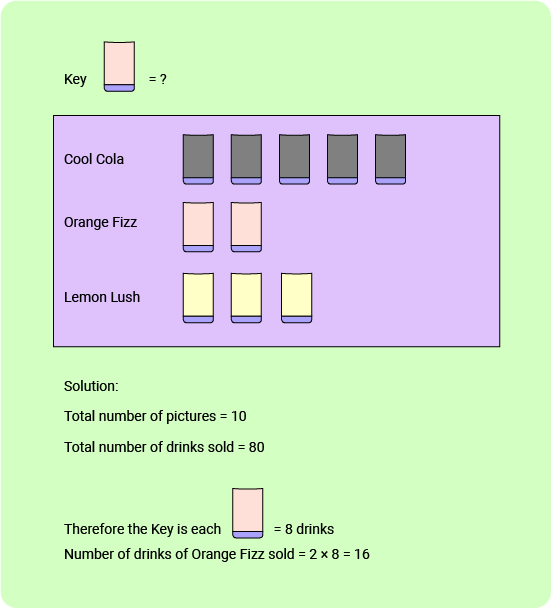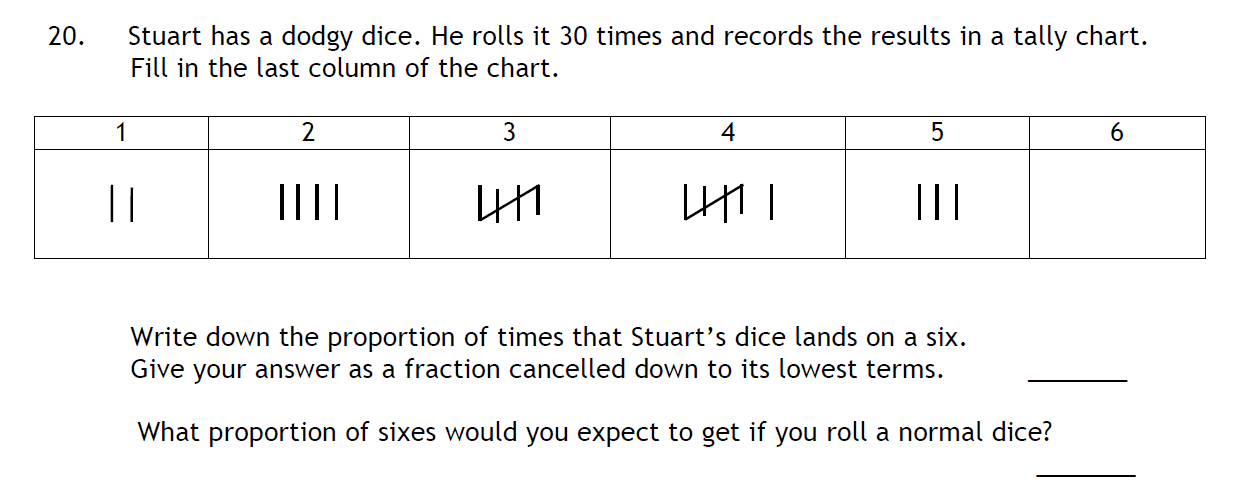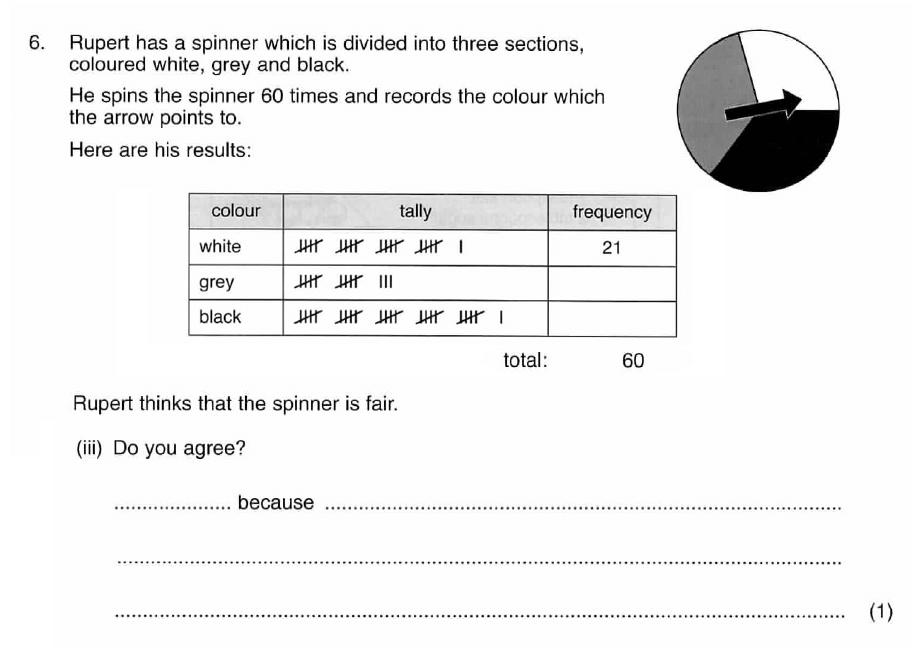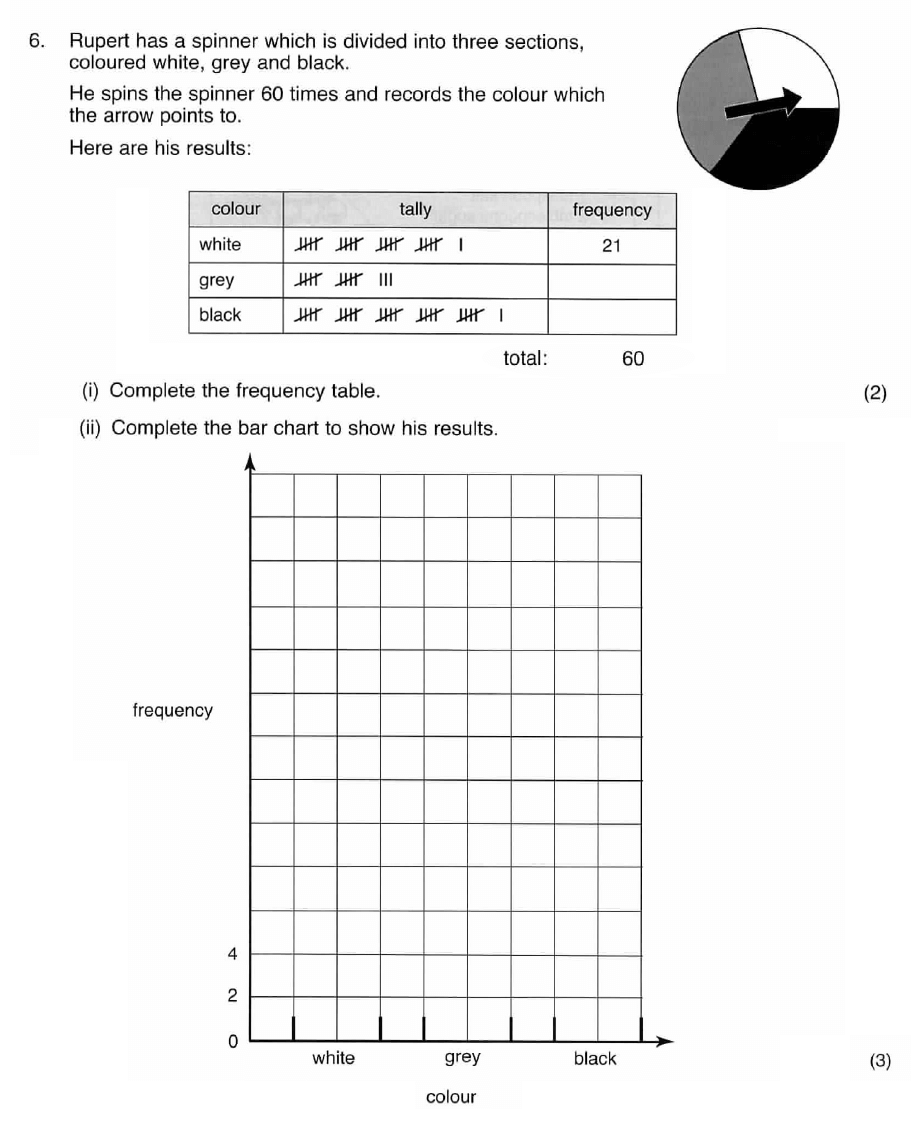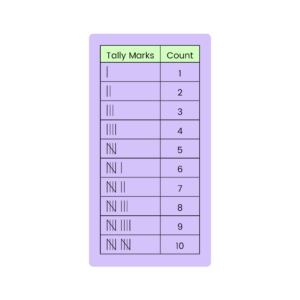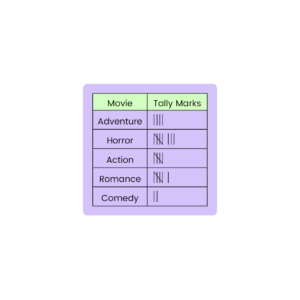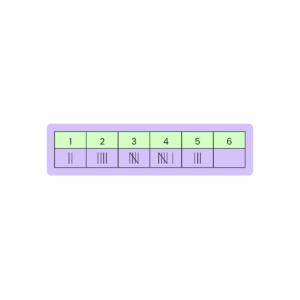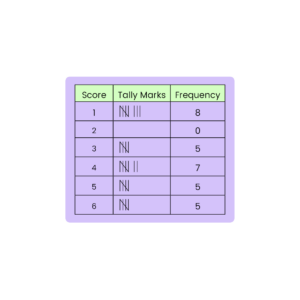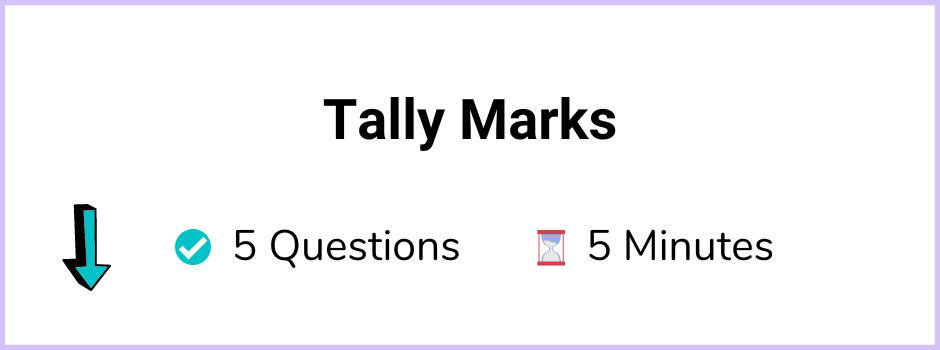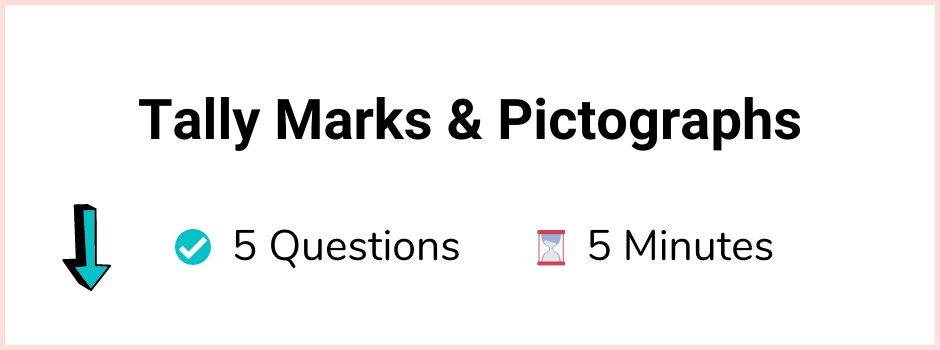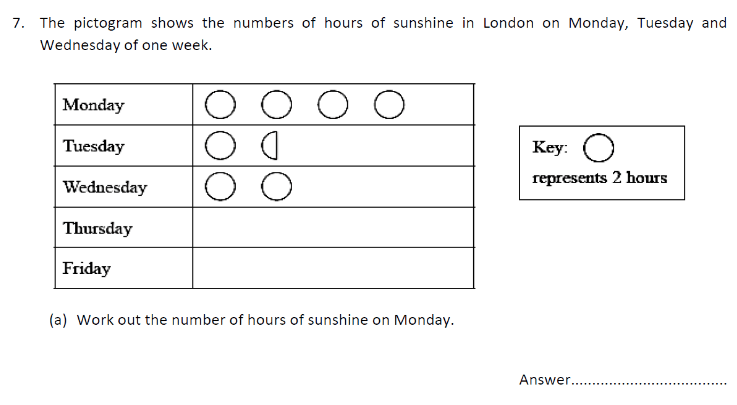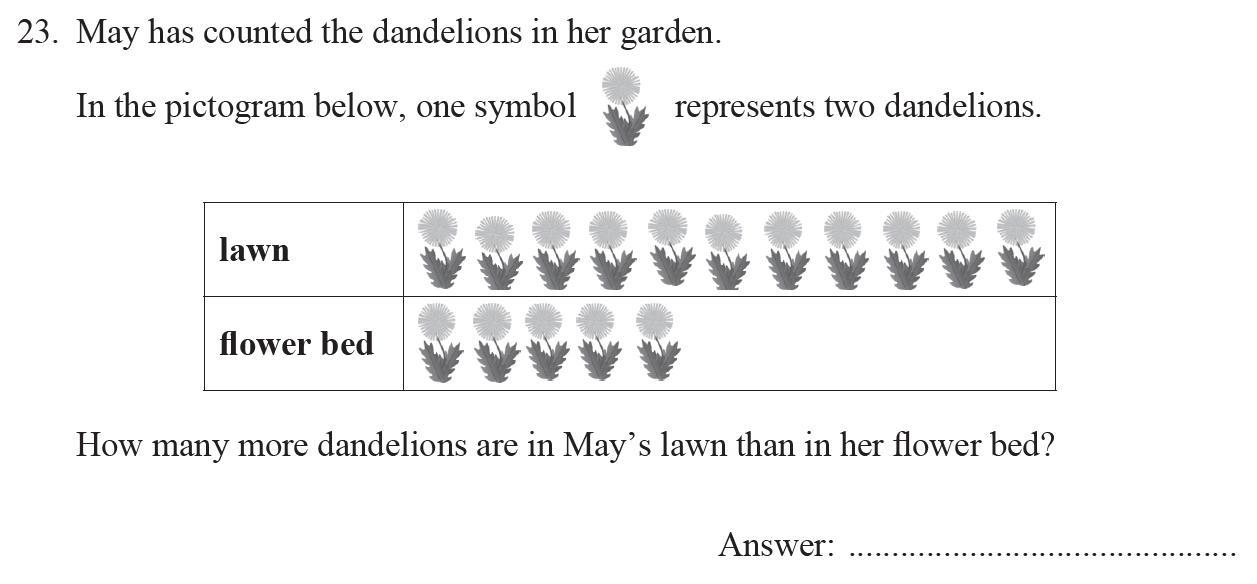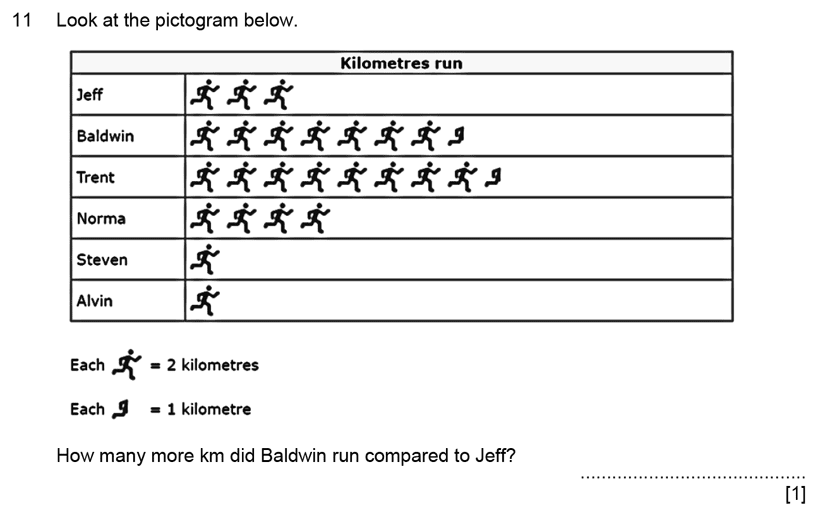1. Tally Charts
Tally Charts are one of the different ways of collecting, recording, organizing and interpreting data. A tally chart is a simple way of recording data and counting the amount of something (frequency). Each occurrence is shown by a tally mark and every fifth tally is drawn diagonally. The tallies can then be counted to give the frequency. For example: 25 pupils were asked about their favourite type of movie.
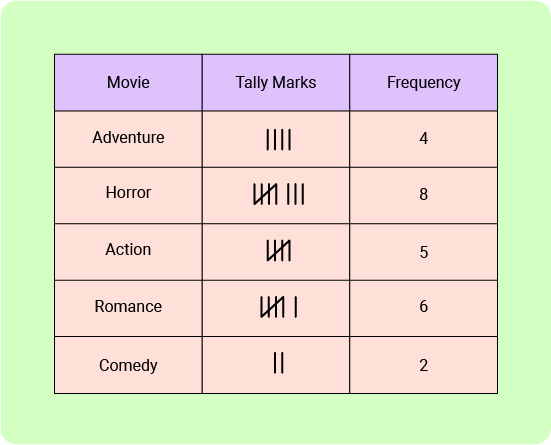
The advantage of using a tally chart is that it can be immediately clear which item(s) occurs the most/least frequently and can be helpful when analyzing data. The tally makes it easy to see the most popular type of movie is horror and the least popular movie type is comedy.
Other graphs/charts (such as bar charts, pie charts and pictograms) can be produced from tally charts.
1.1. Example of Tally Charts
Example:
Mac throws the die 30 times. He put these results:
3 4 1 6 3 4 5 1 4 4 5 6 3 1 4 1 5 1 6 3 1 5 4 1 6 3 5 6 1 4
Form a table and complete the tally chart and workout the frequency (how many times he got each number)
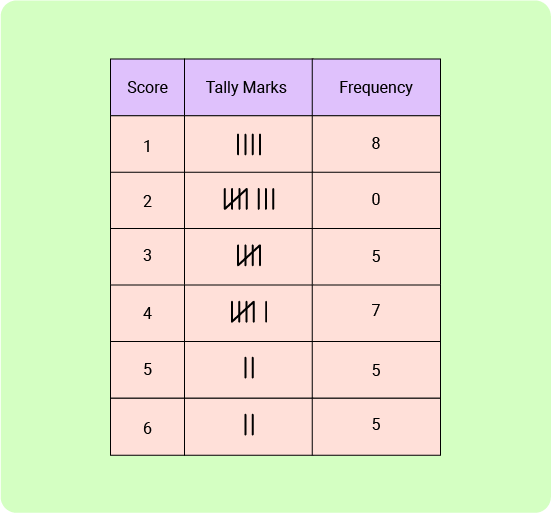
We see score one is repeated 8 times which is represented by 8 tally marks in an easy method. Similarly other scores. And the Frequency column adds up to 30.
Example:
Jack has a dodgy dice. He rolls it 30 times and records the results in a tally chart. Fill in the last column of the chart.
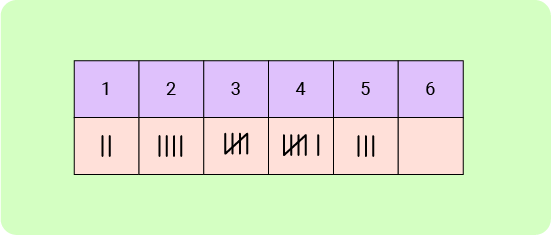
Solution:
The frequency table shows 2 + 4 + 5 + 6 + 3 + x = 30
Number of times the dice lands on x = 30 - (2 + 4 + 5 + 6 + 3)
= 30-20
= 10

2. Pictogram
A pictogram is a chart that uses pictures or symbols to represent data. To read pictograms carefully one should understand what the symbols mean. Each picture in the pictogram represents a physical object.
All pictograms should have a key. A key shows you what each symbol represents. A pictograph design can be constructed using a table with two columns. In the first column is the name of the group, and the second column features the pictures.
For example: Below is a pictogram showing the number of doughnuts eaten by four friends in the past month.
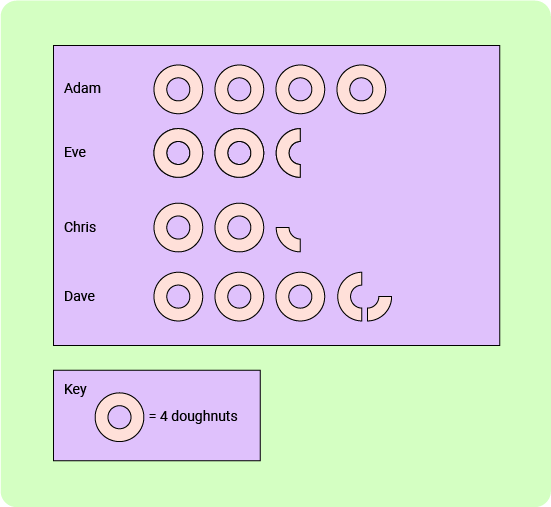
Here, each picture represents 4 doughnuts and so we can see that Adam ate 16 doughnuts, Eve ate 10 doughnuts, Chris ate 9 doughnuts, etc.
Hence Number of doughnuts ate by Adam = 4 × 4 = 16
2.1 Examples on Pictogram:
Example:
Mac drew a pictogram to show information about the drinks sold from a vending machine in the afternoon
Mac knew that 80 drinks were sold in total that afternoon.
How many drinks of Orange Fizz were sold that afternoon?.
The key for the pictogram is incomplete.
